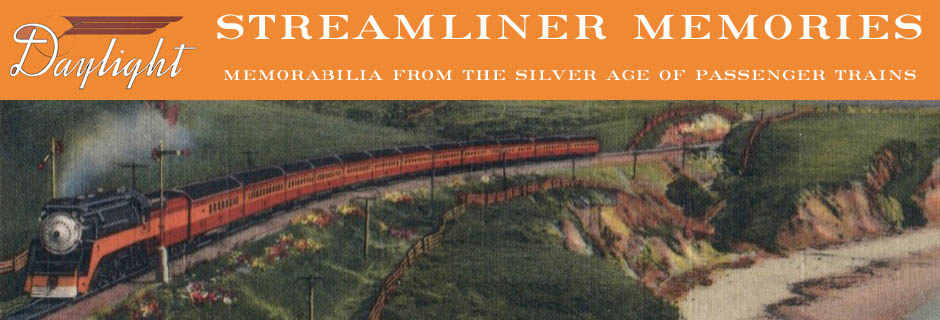Over the past seven weeks, I’ve presented nearly 50 timetables from the Rumsey map collection ranging from 1872 to 1907. Among other things, these timetables showed the evolution of train names, from no names to type names such as “accommodation” … Continue reading
Category Archives: Association of American Railroads
We’ve previously seen a 1958 edition of this booklet; today’s is from 1950. The Association of American Railroads apparently put out an updated version every year, or almost every year, between 1950 and 1960 or so. Click image to download … Continue reading
How did the United States, supposedly the land of free enterprise, ever come to have a government-owned passenger railroad? The answer takes us back at least to 1956, when the Interstate Commerce Commission asked its staff to write a report … Continue reading
Written for a more adult audience, this booklet focuses on the benefits provided by the railroads while neglecting to mention or painting over the scandals, controversies, and financial panics brought about by their construction and operation. A series of maps … Continue reading
I noted that yesterday’s booklet was designed to go along with the Railroads at Work booklet, but the former never really mentioned the latter. However, this one–which is labeled “vol. 2”–offers a detailed picture-by-picture explanation of 64 of the photos … Continue reading
This booklet was apparently distributed to teachers to use with the Railroads at Work booklets, which were given to students. This manual is dated 1956, so it goes along with yesterday’s booklet. Click image to download a 33.2-MB PDF of … Continue reading
By 1956, most railroads had nearly completed the replacement of steam with Diesel, so the steam locomotive in yesterday’s booklet has been replaced with three Diesels. It looks like someone took an Xacto knive and removed the steamer, leaving a … Continue reading
The Association of American Railroads published this educational (i.e. propaganda) booklet for school children, but their cover graphic is somewhat strange. What are those trains doing up in the air, flying beside those smokestacks? Why is the sky behind the … Continue reading
In 1952, the Association of American Railroads estimated that there were 13,000 daily trains in the United States, including “local and suburban [i.e., commuter] trains,” but not subway or other urban transit trains. Of the 13,000, about 650 were distinguished … Continue reading
